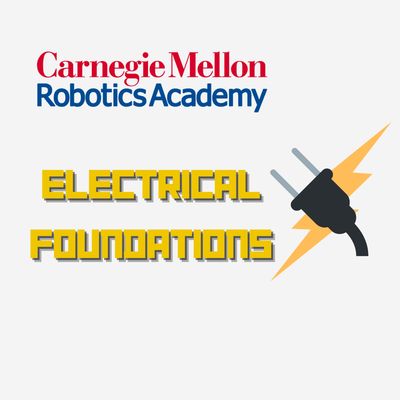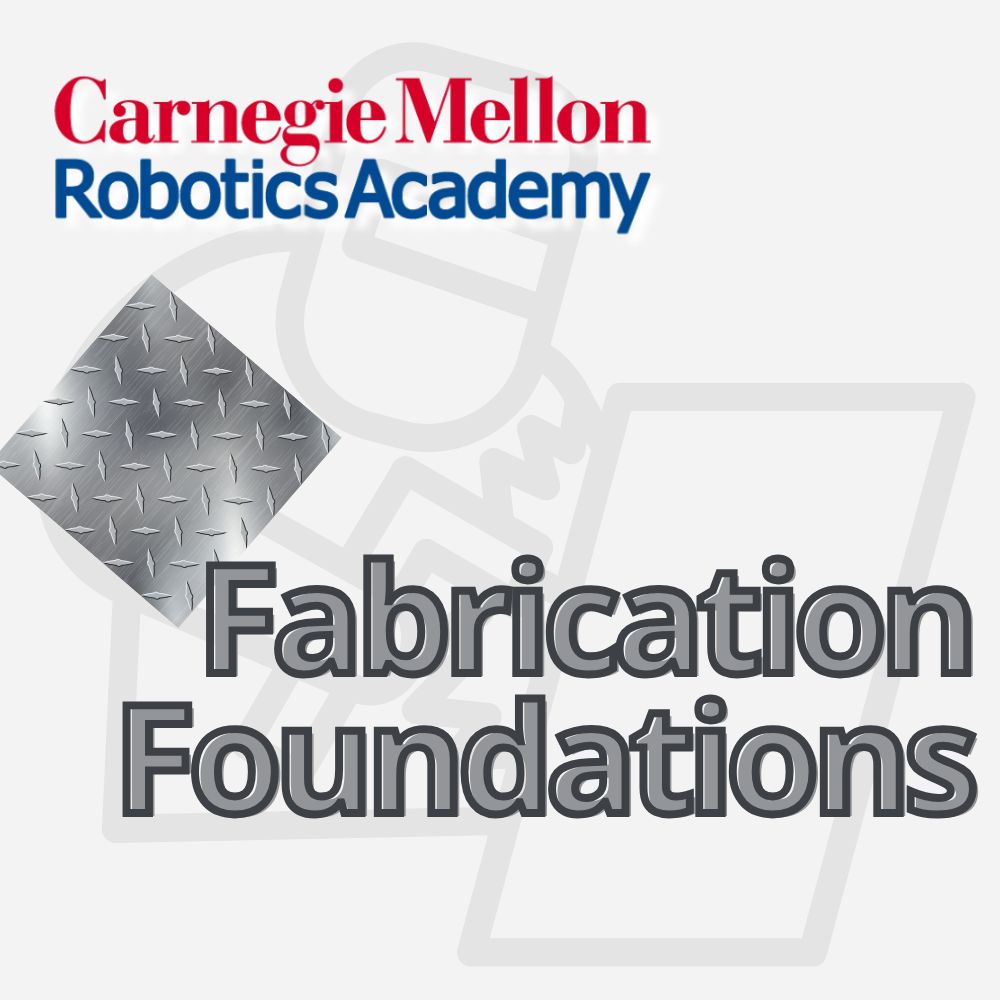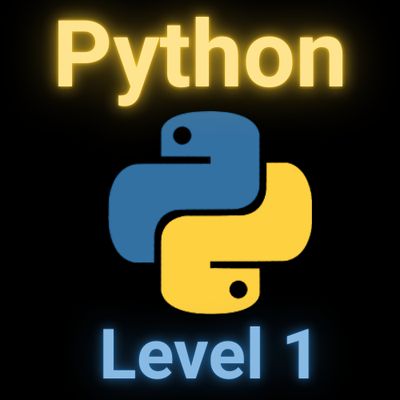Carnegie Mellon Robotics Academy: Fabrication Foundations
Class Size: 1 to 8 students. To ensure personalized attention and support, we maintain a 1:4 instructor-to-student ratio. For new students joining at any point, additional instructors are added to provide support and help them catch up seamlessly.
Total Duration: 8 weeks.
Group Discount:
- Groups of 2–3: 10% off
- Groups of 4 or more: 25% off
Shape Ideas into Working Parts
Move beyond concepts and into the shop floor of robotics. Translate drawings into accurate parts as you lay out, cut, and drill acrylic and aluminum, verifying every step with a combination square and dial calipers.
Configure a 3D printer to produce a sensor mount that aligns cleanly with your chassis, then bring everything together in a tidy, fit-checked assembly. Finish with a hand-built chassis, an aluminum motor mount, and a printed component—and the shop-ready habits technicians use daily.
To earn a certificate, students must complete the projects according to the given specifications, which will be reviewed and approved by instructors before being uploaded. Additionally, students must pass the final exam with a score of 70% or better to complete the course and earn their certification successfully. The cost for the certification is an additional $200.
Developed by Carnegie Mellon Robotics Academy
This course was developed by the Carnegie Mellon Robotics Academy (CMRA), a global leader in robotics education. CMRA researches how educators can use robots to teach Computer Science, Science, Technology, Engineering, and Mathematics (CS-STEM). Their mission is to create CS-STEM opportunities for all learners by designing research-based, classroom-tested solutions to foreground essential STEM concepts.
Course Schedule
Session 1: Orientation, Safety, and Reading Drawings
Overview of the CMRA Fabrication Foundations course format (anytime, self-paced with just-in-time videos). Introduce SMART-aligned fabrication competencies used by robotics technicians.
- Tool safety: saws, drills, bench vise; handling acrylic and aluminum.
- Reading and interpreting drawings: dimensions, hole locations, callouts.
- Marking basics with a scribe and combination square.
Session 2: Measuring and Layout for the Acrylic Chassis
Prepare to fabricate the Unit 1 chassis by transferring a drawing to acrylic accurately.
- Using dial calipers and combination squares for precise layout.
- Workholding with a bench vise; protecting acrylic surfaces.
- Drilling pilot holes in acrylic; bit selection and feed/speed to prevent cracking.
Session 3: Cutting and Drilling the Acrylic Chassis
Execute the Unit 1 chassis fabrication with safe cutting and drilling practices.
- Sawing techniques to minimize stress and avoid acrylic cracking.
- Hole placement verification against the drawing.
- Quality checks and rework strategies.
Session 4: Aluminum Motor Mount — Planning and Tooling
Introduce Unit 2 by planning an aluminum motor mount and selecting appropriate tools.
- Material differences: acrylic vs. aluminum; hardness and cutting implications.
- Drill bit types for metal; lubrication and drilling sequence.
- Using a radius gauge for more complex features.
Session 5: Fabricating the Aluminum Motor Mount
Build the Unit 2 motor mount with correct dimensions and surface finish.
- Accurate marking, clamping, and drilling in aluminum.
- Creating radii and verifying fit for a small motor.
- Inspection against the drawing; troubleshooting misalignment.
Session 6: 3D Printing — Configuration and Preparation
Prepare for Unit 3 by configuring a 3D printer and setting up software.
- Printer setup and checks prior to printing.
- Load a 3D model into slicing software and select basic settings.
- Review system requirements and file preparation steps.
Session 7: 3D Printed Sensor Mount — Modification and Print
Modify and print a sensor mount so that holes align with the chassis.
- Adjust hole positions to match the Unit 1 chassis.
- Slice, print, and evaluate dimensional accuracy.
- Iterate settings to improve fit and surface quality.
Session 8: Integration, Evaluation, and Next Steps
Integrate chassis, motor mount, and 3D printed sensor mount. Review learning outcomes and options for certification.
- Fit-check assembly and alignment across all fabricated parts.






